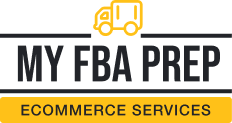
Issue 102: The DTC Discussion: SEO, Mobile Responsiveness, and Platforms

Hello, MyFBAPrep Sellers!
Today is all about your DTC business, from choosing the right platform, to optimizing for discovery, and ensuring a good user experience for your mobile shoppers.
Shopify vs WooCommerce vs BigCommerce: Pros and Cons
The age-old debate lives on between Shopify, WooCommerce, and BigCommerce. They are are some of the most well-known eCommerce platforms, each with a staunchly loyal following.
However, with so many opinions on the best platforms, it can be challenging to decide which is best for your eCommerce site. To help you out, we’ve crafted a quick comparison of Shopify vs WooCommerce vs BigCommerce. Here’s how they stack up against each other and what to be aware of as you evaluate your options.
Shopify pros
- Easy to use
- No dev knowledge required
- Large app store
- Lots of payment options
- 24/7 support
Shopify cons
- Limited customization
- Fees
- Relies on apps
- Difficult to scale internationally
BigCommerce pros
- Zero transaction fees
- Built-in functionalities
- Deep, expansive integrations
- 24/7 customer service
BigCommerce cons
- Fewer templates
- Order limits
- Learning curve
- Harder to customize
WooCommerce pros
- Flexibility
- Freeware
- Great for content marketing
- Large community
WooCommerce cons
- Learning curve
- Relies on plugins
- Maintenance
- Limited customer support
Get the full details on each option.
Use MyFBAPrep for your DTC fulfillment, subscription box prep, and more
Work with MyFBAPrep to get your subscription boxes prepped and delivered, restock your retail stores, deliver DTC, and much more.
Best Practices For Building a Mobile-Responsive Website
It’s no exaggeration to say mobile devices have become practically an extension of our bodies; they account for just over half of web traffic worldwide today. As further evidence, every third mobile user searches for answers to questions on their device, and 72% are likely to buy from or recommend an eCommerce site that’s mobile-friendly.
Given that mobile makes up 60% of all eCommerce sales and is predicted to continue to grow, eCommerce professionals can’t afford to neglect the mobile shopping experience for prospective customers.
To appeal to this market segment, you have to create a mobile responsive website that meets the unique requirements of these devices. Read on to learn best practices and understand the implications of a mobile-first design on your business’s success.
Learn all the tips for a good mobile shopping experience.
Why Every DTC Store Should Have an SEO Strategy (and How to Do It)
By introducing SEO into your brand promotion, you’ll see wide-reaching results that contribute to a higher conversion rate, like:
Ongoing organic traffic: Unlike ads that require you to cough up money regularly to keep generating traffic, SEO works in the background and continuously brings in visitors well after you publish content.
Greater brand visibility: Effective SEO translates into higher rankings on Google’s search result pages. This means more Google users will be able to find you when they search for products or services like yours.
Higher-quality leads: By targeting the right keywords and phrases, you draw in and engage browsers with a clear need for your products. Your content can further nurture leads by demonstrating your industry expertise and winning their trust.
Learn how to get started in 6 steps.
Top Industry News
Michaels Turns Physical Stores Into Omnichannel Supply Chain Hubs (Chain Store Age)
Mismatches in labor and order allocation led to additional increases in order processing time and days it took to complete deliveries. To address these issues, in 2023 Michaels designated 50% of the stores participating in its omnichannel fulfillment program as “peak stores” due to their heavier order volume. The retailer increased the inventory of standard basic assortment SKUs in peak stores to raise the likelihood of orders shipping complete and reduce split shipments.
3 Keys To Successful Direct-To-Consumer E-Commerce (Forbes)
Direct-to-consumer (DTC) e-commerce has transformed how businesses engage with customers. By bypassing traditional retail channels, companies can sell directly to their target market while retaining more control over their brand and customer experience. However, succeeding in the DTC space requires strategic planning and careful execution. Selling your products through your own channels successfully is no mean task especially if you haven’t discovered what works for your products yet.
The Role of Packaging in Fashion’s eCommerce Transformation (Packaging Gateway)
The rise of online shopping has not only transformed how consumers buy clothes but also how these products reach their doorsteps. In this intricate dance of logistics and branding, packaging emerges as a critical player — influencing everything from customer satisfaction to environmental impact. The symbiotic relationship between the fashion industry and packaging sector is becoming increasingly intricate as both industries evolve. As online sales continue to grow, the innovations in this field are not just shaping current trends but are also paving the way for the future of fashion retail.
Walmart is Nabbing Target’s ‘Tar-jay’ Rep and Amazon’s Delivery Crowd as Even the Wealthy Flock to the Retail Giant (Fortune)
Walmart attributed its growth to its 21% surge in e-commerce revenue, led by curbside pick-up and delivery orders—a service typically favored by wealthier consumers looking for convenience. It also gained market share in groceries as consumers continue to stray from discretionary purchases in favor of just buying the essentials. Customers making over $100,000 have contributed the most to Walmart’s market share takeover.
Walmart Surges to All-Time High as Earnings Beat on High-Income Shopper, eCommerce Gains (CNBC)
In an interview with CNBC, Chief Financial Officer John David Rainey said one of the factors boosting Walmart’s grocery business is the widening gap between the price of cooking at home and buying food at fast-food chains or restaurants. Plus, he added, shoppers appreciate the convenience that Walmart offers. For the first time, its delivery business surpassed its store pickup in terms of volume, Rainey said.
Pepper Raises $30M to Propel Independent Food Distributors with its SaaS E-Commerce Platform (Alley Watch)
The platform’s capabilities extend beyond simple ordering; it includes an expanding set of integrated features like dynamic pricing, payment processing, CRMs for sales representatives, content libraries, and a marketing suite for promotions. There are approximately 25,000 independent food distributors in the United States, each at different stages of digital adoption necessary for 21st-century competitiveness. Pepper facilitates this transition with an accessible SaaS subscription model, empowering businesses to enhance their operations without needing costly internal proprietary systems.
H-E-B Opens E-Comm Fulfillment Center to Support Omnichannel Strategy (Progressive Grocer)
Texas-based H-E-B has opened a new e-commerce fulfillment center in Cibolo. The 55,000-square-foot facility, which is connected to H-E-B Cibolo at 850 FM 1103, will support H-E-B Curbside and Home Delivery orders throughout Cibolo, New Braunfels and surrounding cities around the San Antonio area.
Until next time,
Rachel Andrea Go
Marketing Director, MyFBAPrep
